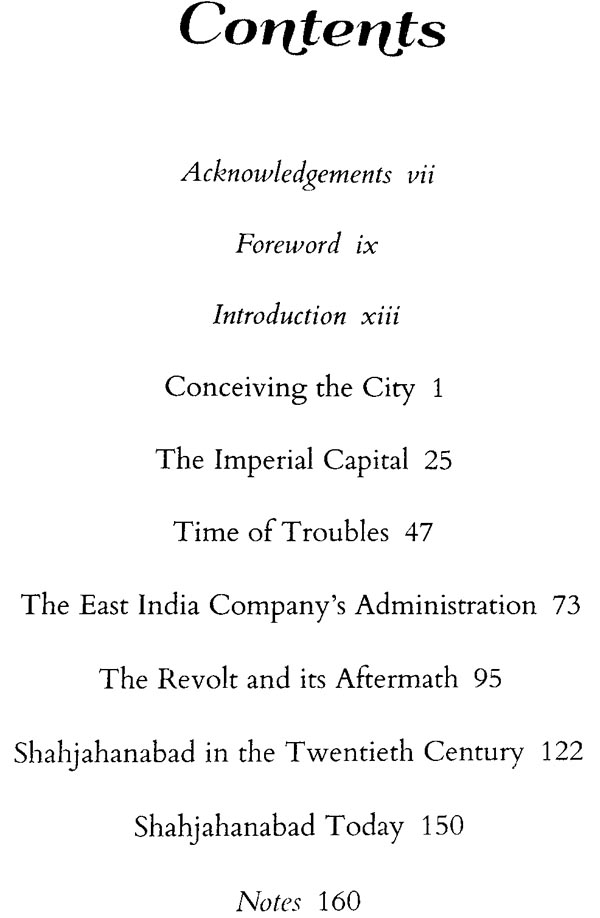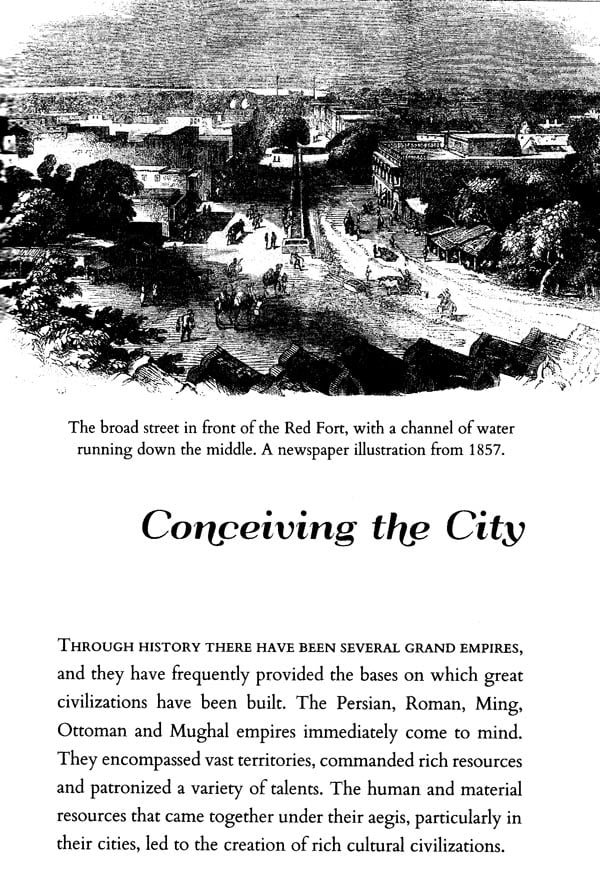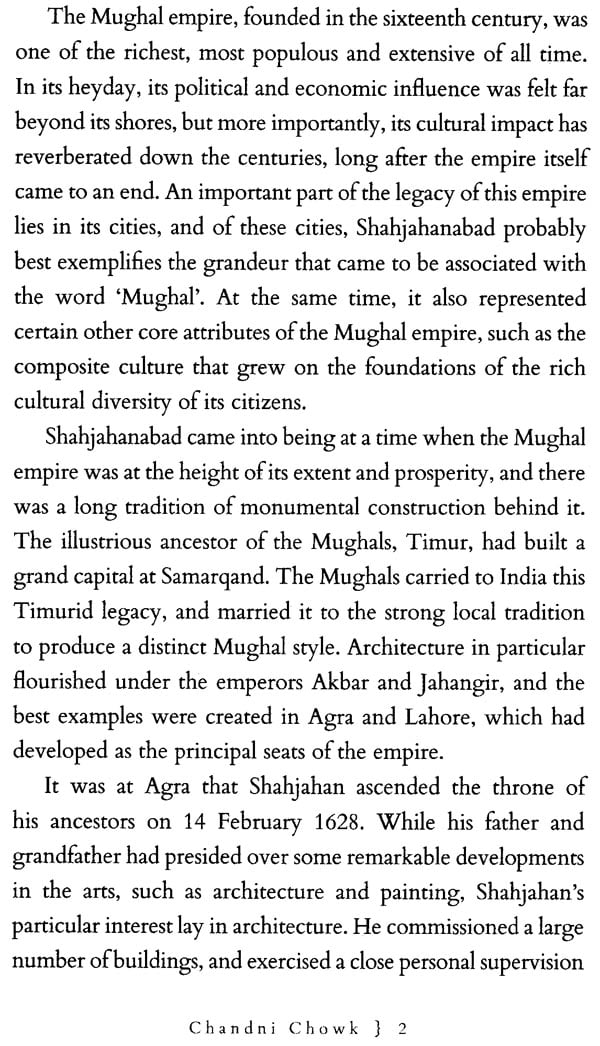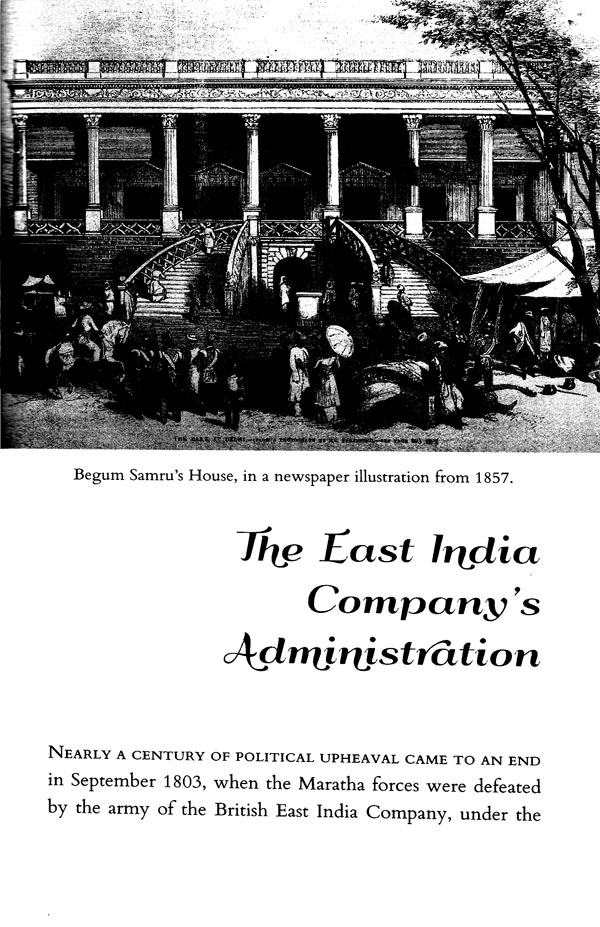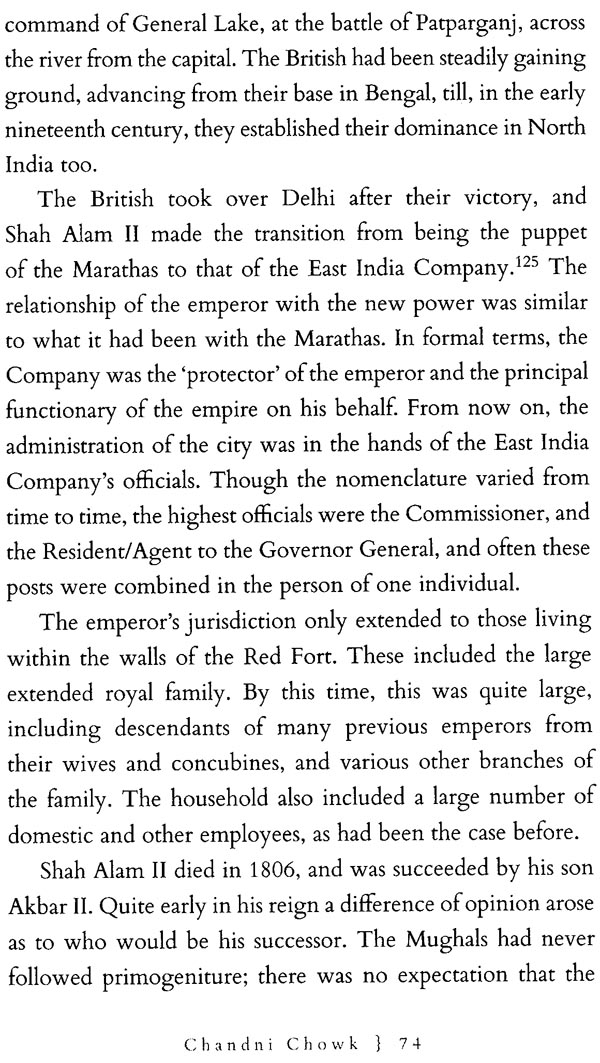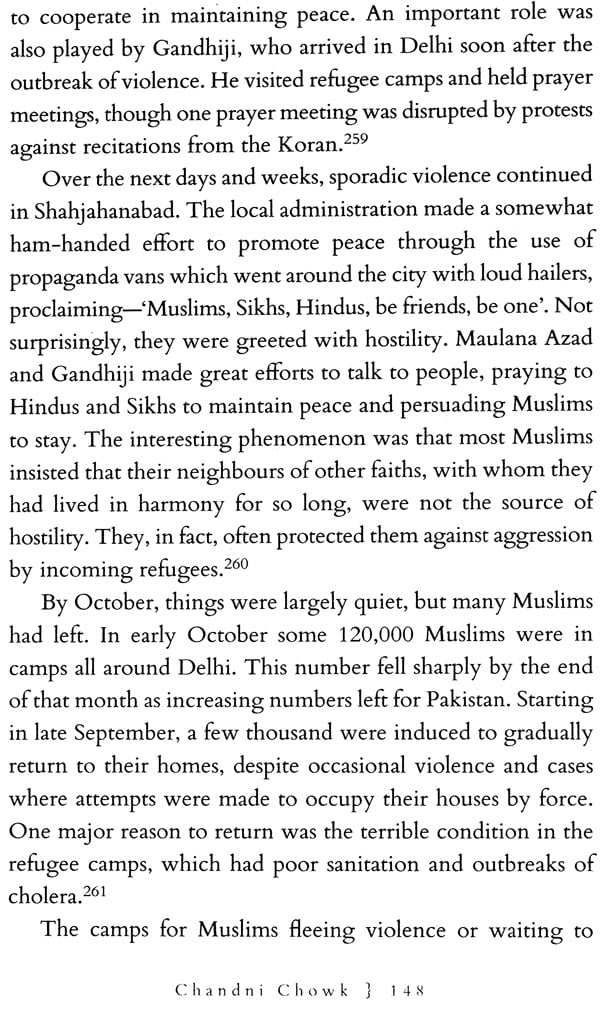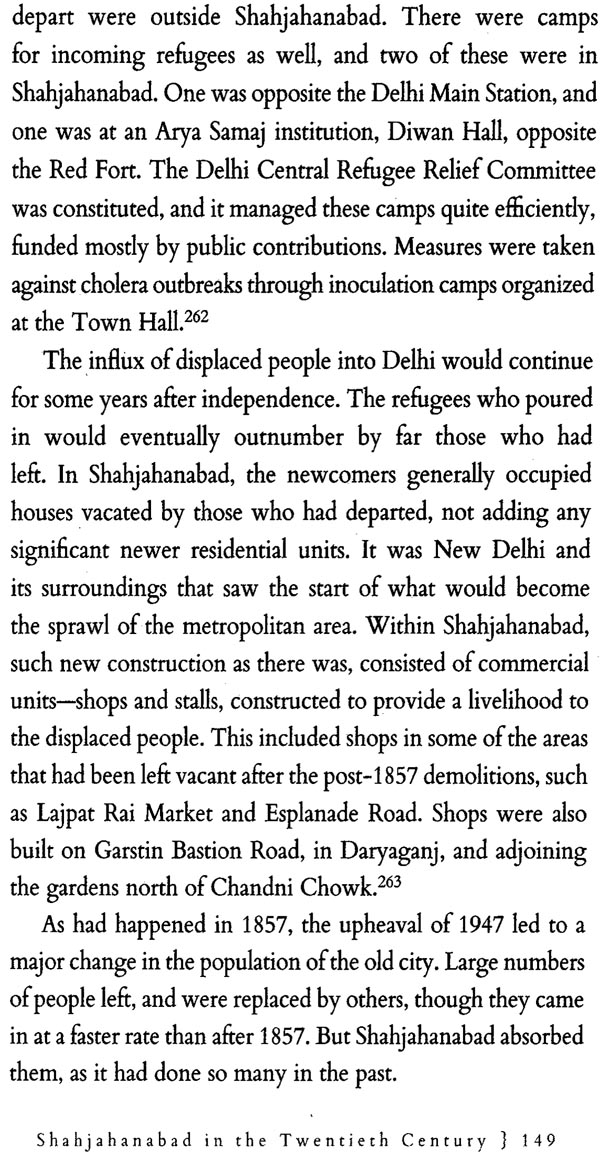
Chandni Chowk: The Mughal City of Old Delhi
Book Specification
| Item Code: | NAQ440 |
| Author: | Swapna Liddle |
| Publisher: | Speaking Tiger Publishing Pvt. Ltd. |
| Language: | English |
| Edition: | 2017 |
| ISBN: | 9789386050670 |
| Pages: | 196 (Throughout B/W Illustrations) |
| Cover: | HARDCOVER |
| Other Details | 8.00 X 5.50 inch |
| Weight | 200 gm |
Book Description
`A lively and easy read, enjoyable and accurate. The glorious and inglorious past of Shahjahanabad is brought to life by a historian with a light touch.' -GURCHARAN DAS
In this account are to be found the answers to many questions about this city and its inhabitants? What is the story behind the establishment of Dariba, the famous jewellery market? How did the people of Delhi react to the public humiliation and death of Dara Shukoh at the hands of his brother Aurangzeb? How did Urdu poets memorialize the trauma of the Revolt of 1857? What part did the students and teachers of Delhi's educational institutions play in the struggle against British rule? And finally, how does the history of this grand city shape its present and future?
Today Shahjahanabad has been subsumed under the gigantic sprawl of metropolitan Delhi. Yet it has an identity that is distinct. Popularly known as Chandni Chowk, its name conjures up romantic narrow streets, a variety of street food and exotic markets. For Shahjahanabad is still very much a living city, though the lives of the people inhabiting it have changed over the centuries. Dariba Kalan still has rows of flourishing jewellers' shops; Begum Samru's haveli is now Bhagirath Palace, a sprawling electronics market; and no visit to Chandni Chowk is complete without a meal at Karim's, whose chefs use recipes handed down to them through the ages for their mouthwatering biriyani and kebabs. Swapna Liddle draws upon a wide variety of sources, such as the accounts of Mughal court chroniclers, travellers' memoirs, poetry, newspapers and government documents, to paint a vivid and dynamic panorama of the city from its inception to recent times.
At YES BANK, we are dedicated to the promotion, development and conservation of India's cultural heritage through our YES Culture initiative, which is an integral part of our practicing think-tank, YES Institute. At YES Institute, glocalisation of ideas is driving new age innovations and solutions for India's socio-economic growth and development. We are indeed uniquely positioned to drive socio-economic development through promotion of India's creative and innovative culture forms.
Taking lessons from Delhi's grand intellectual and cultural history can be truly beneficial for the development of our country. YES Institute and YES Culture's initiatives and efforts are focused on India's rich and diverse heritage. Our sustained efforts in this vital area are aimed at promoting national pride and developing India into a truly community-driven, sustainable destination.
Swapna Liddle's lucid style succeeds in addressing all of us in an easy manner and the vast range of sources that she draws on brings the stories of Old Delhi alive. Her love for the city of Delhi shines through and this is echoed in her long-standing work at INTACH. This work has significantly shaped conservation and heritage education; it has also spearheaded heritage awareness in India.
Old Delhi embodies centuries of growth and diverse leadership within its historic tapestry. This has resulted in an environment of new juxtaposed with old, and several different communities living together. The heritage structures and people that live in these landscapes come together to represent the city's rich history, traditions and beautiful craftsmanship.
Promoting citizen engagement with our tangible and intangible heritage must make heritage accessible to all. Civil society participation and awareness of our heritage is vital for the preservation and conservation of these heritage sites.
I am confident this unique book will encourage you to relish and visit Old Delhi's cultural treasures and appreciate them as important assets in the life of our national capital.
Of these, the seventeenth-century Mughal city of Shahjahanabad is of particular interest for two main reasons. Firstly, its street plan and major buildings are still mostly intact, which enables us to understand its layout and design. Secondly, it is still a living city. Though the lives of the people inhabiting it have changed over the centuries, the city's markets, lanes and courtyard houses, to quite an extent, continue to be used as they were in Shahjahan's time.
Today, Shahjahanabad has been subsumed under the gigantic sprawl of metropolitan Delhi. On the map of modern Delhi, it occupies a fairly small dot. Yet it has an identity that is distinct. Popularly known as Chandni Chowk, or Old Delhi, its name conjures up romantic narrow streets, a variety of street food and exotic markets. And increasingly, not only tourists but residents of other parts of Delhi want to experience this city and its culture in all its richness. Proof of this lies in the popularity of the many different historic tours, heritage walks, food walks, photography workshops and the like, that focus on this historic precinct.
While it is interesting to explore the contemporary space that is Chandni Chowk today, it is equally fascinating to explore its history, and in fact the one complements the other. My own engagement with this city has been at multiple levels. Many years of personal exploration in its intricate lanes have led me to a familiarity and appreciation of the physical space of the city, and of its contemporary culture. At another level, a PhD thesis on the intellectual and cultural life of nineteenth century Delhi prompted me to look at this city's past with the rigor of an academic.
My work with the Delhi Chapter of the Indian National Trust for Art and Cultural Heritage (INTACH) has involved a concern with the need to preserve Shahjahanabad's many historic structures. An interesting project with which I was involved, was the production of a detailed dossier that formed part of the application to the United Nations Educational, Scientific and Cultural Organization (UNESCO), for inclusion of Shahjahanabad on the list of World Heritage Cities. The writing of the historical background that was part of this dossier prompted me to examine closely and think deeply about what was special about this historic city. Though that project did not reach fruition, the work on it has been rewarding in other ways, and deserves to be shared.
In a way, this book is the result of my interaction with Shahjahanabad on these various planes. For many years I have been leading heritage walks through Shahjahanabad, with a view to raising awareness about the need to preserve its rich history and traditions. An important part of the narrative on such walks is the history of the city's many sites. Events and characters from different eras of the history of the city are intimately connected to the spaces one walks through today. Invariably, an important question that is posed to a walk leader at the end of the walk is-is there a book where I can read about the history of Shahjahanabad?
It is a question I find hard to answer. There are many books that have been written on Shahjahanabad. On the one hand, there are richly illustrated coffee table books that deal with some aspects of its history, culture and architecture, through pictorial essays. At the other end of the spectrum there are books that examine the city from a planning perspective-its design, layout, use and evolution. Then there are history books that have dealt in detail with the foundation of the city, its major buildings and neighborhoods. There are some books that deal with major historical events, or with movements
Book's Contents and Sample Pages
